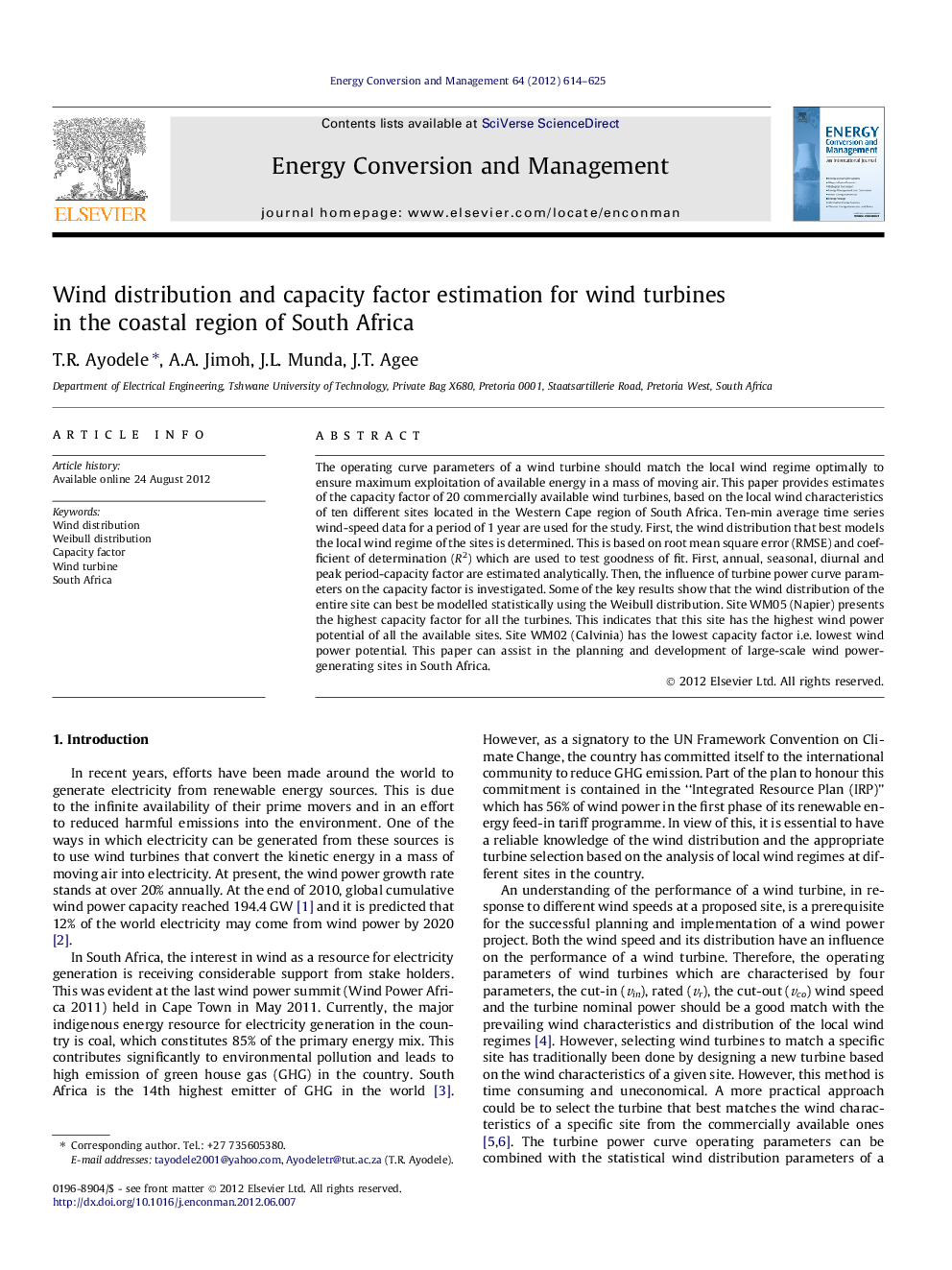| Article ID | Journal | Published Year | Pages | File Type |
|---|---|---|---|---|
| 761168 | Energy Conversion and Management | 2012 | 12 Pages |
The operating curve parameters of a wind turbine should match the local wind regime optimally to ensure maximum exploitation of available energy in a mass of moving air. This paper provides estimates of the capacity factor of 20 commercially available wind turbines, based on the local wind characteristics of ten different sites located in the Western Cape region of South Africa. Ten-min average time series wind-speed data for a period of 1 year are used for the study. First, the wind distribution that best models the local wind regime of the sites is determined. This is based on root mean square error (RMSE) and coefficient of determination (R2) which are used to test goodness of fit. First, annual, seasonal, diurnal and peak period-capacity factor are estimated analytically. Then, the influence of turbine power curve parameters on the capacity factor is investigated. Some of the key results show that the wind distribution of the entire site can best be modelled statistically using the Weibull distribution. Site WM05 (Napier) presents the highest capacity factor for all the turbines. This indicates that this site has the highest wind power potential of all the available sites. Site WM02 (Calvinia) has the lowest capacity factor i.e. lowest wind power potential. This paper can assist in the planning and development of large-scale wind power-generating sites in South Africa.
► We evaluate capacity factor of some commercially available wind turbines. ► Wind speed in the sites studied can best be modelled using Weibull distribution. ► Site WM05 has the highest wind power potential while site WM02 has the lowest. ► More wind power can be harnessed during the day period compared to the night. ► Turbine K seems to be the best turbine for the coastal region of South Africa.
